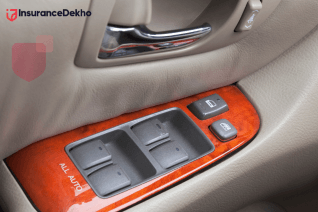All You Need to Know About Vintage Car Insurance
Because of its rarity, the value associated with a vintage car is rising yearly. However, this cherished possession comes with ist fair share of responsibilities. Thus, the smart investment a proud vintage car owner should definitely make is getting their car insured under a vintage car insurance plan.
Table of Contents
A vintage car is an occasional scene and quite obviously they are highly expensive. Probably, they are the sole vehicles that are priced too high regardless of their age. The actual value of these cars can only be determined by a car enthusiast. Only a few individuals with high earning capacity can afford to own a vintage car not just because it is an expensive vehicle but also due to its skyrocketing maintenance cost. This is the reason why individuals who own a vintage car prefer to get their luxury car insured under a vintage car insurance plan.

Categories of Vintage Cars
It is mandatory for a car to be certified by VCCCI (Vintage and Classic Car Club of India) for it to be considered classic or vintage.
- Antique Cars: All the cars that have been manufactured between 1930 and 1940 are said to be antique cars. These cars need to be low on moderation and should stay close to their original make for them to be considered Antique.
- Classic Cars: All the cars that are manufactured after 1940 but prior to 1970 fall under this category. One should not modify these cars much and they should remain close to their original make and specification.
- Vintage Cars: According to VCCCI, cars that were manufactured between 1919 and 1930 are known as Vintage cars. As opposed to the aforementioned categories, a vintage car doesn't lose valuation even after going through various modifications.
Vintage Car Insurance
An individual to stand eligible to buy Vintage car insurance must get their car evaluated and certified by the Vintage and Classic Car Club of India or VCCCI. The car owner and the insurance provider, depending on an evaluated value, can decide on a mutual sum insured. Moreover, make sure to read the policy document carefully to know about the different aspects it covers. Often, a vintage car participates in public events, exhibition programs or rallies. It is significant for the insurance provider to offer coverage against the damages to the car in such events.
What are the Factors that Can Affect Vintage Car Insurance?
Some of the factors that can affect vintage car insurance are as follows;
-
Car’s Age
Insurers follow the guidelines issued by VCCCI to decide the value of the car depending upon its age. Moreover, the criteria for deciding the car’s category may differ from insurance company to insurance company.
-
Cost of Vintage Car’s Spare Parts
Getting spare parts for a vintage car at the time of repair is extremely difficult and expensive. At times, the spare parts may even need to be imported from foreign. Thus, it plays a significant role in deciding the premium amount.
-
Present Car Value
The present value of the car in its current condition serves an important role in deciding the value of insurance as well. Different from present car models that have a particular value attached, deciding the present value of a vintage car is not an easy task.
-
Expected Maintenance Cost of Car
In case the present condition of the car is such that the car owner may have to invest on a regular basis for its repair, then this would undoubtedly increase the payable premium for the car insurance. To decide this, the insurance provider would thoroughly check your car before giving insurance.
In a Nutshell
A vintage car is a valuable possession one can have. Thus, it is only wise to protect something that is so expensive and cherished and the most appropriate way to do this is by getting it insured under a vintage car insurance plan. Also, it is advised to opt for a comprehensive car insurance plan to get enhanced risk cover.
Also Read:
How To Lower Premium of Your Car Insurance?
Top Factors That Determine The Premium of Your Car Insurance Plan
Disclaimer: This article is issued in the general public interest and meant for general information purposes only. Readers are advised not to rely on the contents of the article as conclusive in nature and should research further or consult an expert in this regard.














































